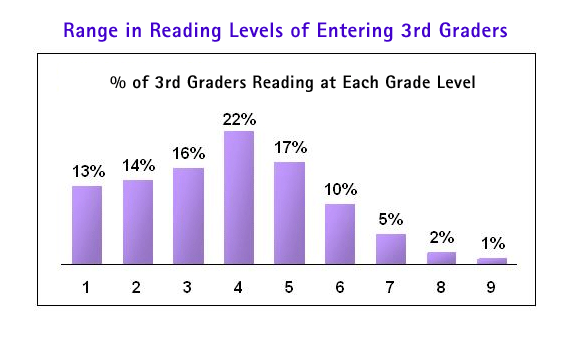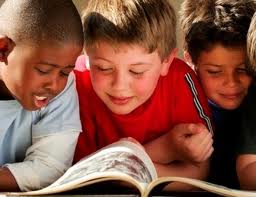 Children who have made the leap to fluent reading will learn exponentially, while those who haven’t will slump.
Children who have made the leap to fluent reading will learn exponentially, while those who haven’t will slump.
By ANNIE MURPHY PAUL
Take a guess: What is the single most important year of an individual’s academic career? The answer isn’t junior year of high school, or senior year of college. It’s third grade.
What makes success in third grade so significant? It’s the year that students move from learning to read — decoding words using their knowledge of the alphabet — to reading to learn.
The books children are expected to master are no longer simple primers but fact-filled texts on the solar system, Native Americans, the Civil War. Children who haven’t made the leap to fast, fluent reading begin at this moment to fall behind, and for most of them the gap will continue to grow. So third grade constitutes a critical transition — a “pivot point,” in the words of Donald J. Hernandez, a professor of sociology at CUNY–Hunter College. A study Hernandez conducted, released last year by the Annie E. Casey Foundation, found that third-graders who lack proficiency in reading are four times more likely to become high school dropouts.
(MORE: Paul: Born to be Bright: Is There a Gene For Learning?) Too often the story unfolds this way: struggles in third grade lead to the “fourth-grade slump,” as the reading-to-learn model comes to dominate instruction. While their more skilled classmates are amassing knowledge and learning new words from context, poor readers may begin to avoid reading out of frustration. A vicious cycle sets in: school assignments increasingly require background knowledge and familiarity with “book words” (literary, abstract and technical terms)— competencies that are themselves acquired through reading. Meanwhile, classes in science, social studies, history and even math come to rely more and more on textual analysis, so that struggling readers begin to fall behind in these subjects as well.
Too often the story unfolds this way: struggles in third grade lead to the “fourth-grade slump,” as the reading-to-learn model comes to dominate instruction. While their more skilled classmates are amassing knowledge and learning new words from context, poor readers may begin to avoid reading out of frustration. A vicious cycle sets in: school assignments increasingly require background knowledge and familiarity with “book words” (literary, abstract and technical terms)— competencies that are themselves acquired through reading. Meanwhile, classes in science, social studies, history and even math come to rely more and more on textual analysis, so that struggling readers begin to fall behind in these subjects as well.
(MORE: Paul: What Distinguishes A Super School From The Rest)
In operation here is what researchers call the “Matthew effect,” after the Bible verse found in the Gospel of Matthew: “For whosoever hath, to him shall be given, and he shall have more abundance: but whosoever hath not, from him shall be taken away even that he hath.” In other words, the academically rich get richer and the poor get poorer, as small differences in learning ability grow into large ones. But the Matthew effect has an important upside: well-timed interventions can reverse its direction, turning a vicious cycle into a virtuous one.
Recognizing the importance of this juncture, some states have been taking a hard line: third-graders who aren’t reading at grade level don’t get promoted to fourth grade. “Mandatory retention” bills have already passed in Arizona, Florida, Indiana and Oklahoma, and are being considered in Colorado, Iowa, New Mexico and Tennessee. But many education researchers say holding kids back isn’t the answer. The ideal alternative: teachers and parents would collaborate on the creation of an individualized learning plan for each third-grader who needs help with reading — a plan that might involve specialized instruction, tutoring or summer school. Most important is taking action, researchers say, and not assuming that reading problems will work themselves out.
(MORE: Andrew J. Rotherham: What Do We Do About Poor Science Scores? Take Kids Outside)
It might seem scary that a single school year can foretell so much of a student’s future. But maybe we should feel grateful instead — that research has given us a golden opportunity to both build on what has already been accomplished or turn kids’ academic lives around.
Paul is the author of Origins and the forthcoming book Brilliant: The Science of Smart. The views expressed are solely her own.
Read full article at http://ideas.time.com/2012/09/26/why-third-grade-is-so-important-the-matthew-effect/

 Children who have made the leap to fluent reading will learn exponentially, while those who haven’t will slump.
Children who have made the leap to fluent reading will learn exponentially, while those who haven’t will slump.




























